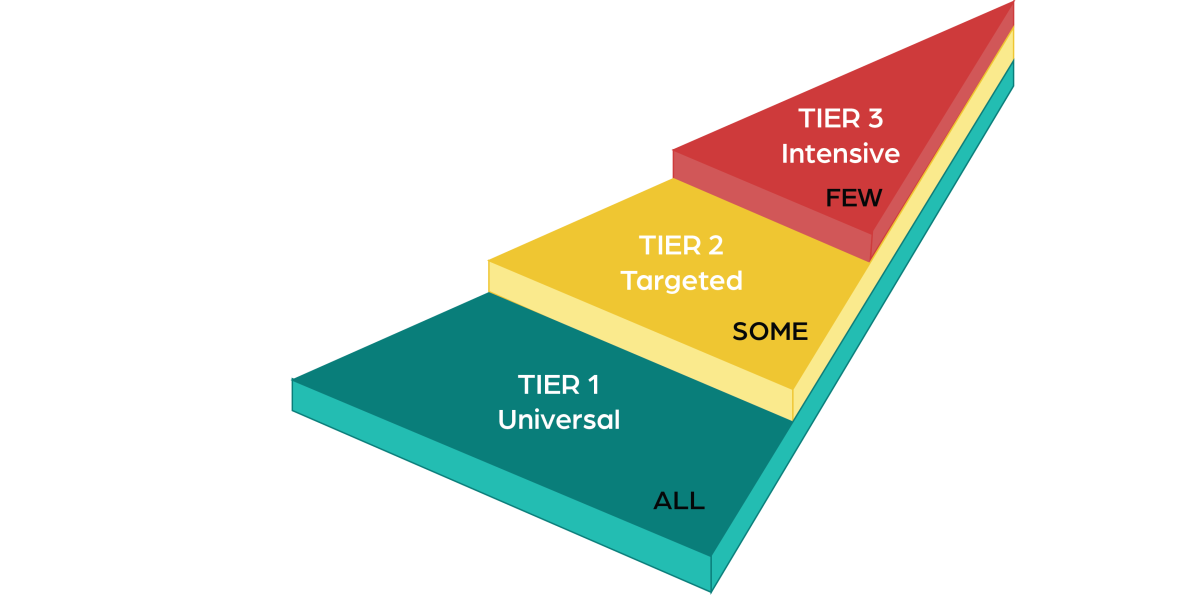Positive Behaviour Support (PBS) is a person-centred framework that aims to improve an individual’s quality of life by providing support in situations where there is, or there is a risk of, challenging behaviour or behaviours of concern.
Behaviour of concern is persistent behaviour that puts the physical safety of people at risk and limits a person’s ability to have a good life. The behaviour is sometimes referred to as ‘challenging’ because it challenges the person on the spectrum and everyone who supports the person to understand why it is happening and to work together to find a solution.
PBS recognises that behaviours of concern occur for a reason, and are communicating important information about what the individual needs, wants and how to support them. When there are behaviours of concern, it is likely that the demands of the person’s situation exceed their ability to cope.
Fundamentals of best practice – PBS
Enhancing quality of life
The fundamental outcome of PBS is improvement in a person's quality of life. What is considered a “good” quality of life can only be defined by the people who are receiving support.
Positive relationships and strengths focus
PBS operates in the context of positive professional relationships. This includes positive regard, respect, trust, knowing people well, and focussing on a person's strengths and interests.
Real-world application
PBS takes a whole person perspective and is delivered in the real world – where people live, work, learn and play.
Stakeholder involvement
PBS includes all stakeholders in each step of the process. This begins with the individual, and includes their family/guardian/carers and others who know them well.
Proactive and preventative
PBS prioritises proactive prevention of behaviours of concern through the adaptation and avoidance of known stressors for people on the autism spectrum and for the individuals supporting the person.
Positive and reinforcing
PBS uses positive and motivating reinforcement to build functional behaviours and skills. PBS does not use punitive consequences such as response cost or negative consequence-based approaches.
PBS is a process
PBS is a problem-solving process. The process includes goal setting, PBS assessment, multi-element supports, implementation and review.
Function and replacement
Behaviours of concern communicate information. An essential part of PBS is understanding this function and supporting new replacement behaviours or skills that will reduce behaviours of concern in the future.
Planned crisis management
PBS manages crisis situations through careful detailed plans that emphasise prevention, dignity, de-escalation, meeting a person's wants and needs, calm flexible staff behaviours and ongoing learning.
Minimise restrictive practices
PBS aims to prevent, minimise and reduce the use of restrictive practices, using them only as a last resort, in the least restrictive way, where fading strategies are implemented and requirements are met for monitoring. Restrictive practices include, but are not limited to:
- chemical restraint: the planned use of psychotropic medication to manage behaviour and/or the use of reactive PRN medication (given 'as needed')
- physical restraint: where movement of any part of the person's body is prevented, restricted or subdued, including physically escorting someone to go somewhere against there will
- mechanical restraint: the use of travel harnesses, seat belt buckle covers, specific clothing such as body suits, onesies, gloves or helmets
- seclusion or exclusionary time out: where a person is solely contained in an area and is unable to leave for a fixed or open amount of time
- environmental restraint: restricted access beyond normally accepted community practices, restricting access to services or school, and includes locking doors, cupboards or removing access to specific items and activities (such as food or drink).
Practice
Aspect’s PBS approach consists of three tiers:
This 2024 research paper details a practice framework for individualised PBS, which incorporates existing function-based PBS principles and integrates contemporary research and Australian legislation to frame practice elements through a human rights lens.

Tier 1 PBS
Build positive relationships
Positive, trusting relationships are built on a thorough understanding of the individual and a perspective that values their strengths and interests while prioritising their dignity, respect and independence. This approach results in increased positive behaviors and decreased behaviors of concern. Aspect staff can use the Five Point Star profile and/or the Individual Profile (Green Form).
Autism-friendly environments
Autism-friendly environments use structured supports, communication supports and meet the sensory needs of the person to minimise the likelihood of behaviours of concern. Education staff can refer to the PBS Good Practice Classroom Checklist. Aspect ICS also has Environmental Checklists for adult day programs, adult at home or community settings and child at home or education settings. These checklists can be utilised to assess for autism-friendly environments. In schools, Tier 1 supports focus on defining, teaching and reinforcing school-wide values and positive behaviour expectations. School values are broad categories of positive behaviour expresses as a short statement, for example, We are Respectful, We are Kind, We are Safe. School values (which are co-produced with the whole school community), enable everyone to have a shared language across all areas of the school Aspect schools teach school values through positive behaviour expectations.
Basic PBS practice
When behaviours of concern occur, the following steps can be followed (note if a person has an individual Behaviour Response Plan that should be followed):

Tiers 2 and 3 PBS
When a behaviour/s of concern persists despite Tier 1 supports being in place, a PBS approach is used to focus on understanding and modifying the environment, teaching new skills and reinforcing positive behaviours. General principles are outlined below. Aspect's Orange Form can be used to document this process:
- Orange Form for ICS
- Orange Form for Education – Policy Library version
- Orange Form for Education – Google Docs version. To use this form, make a copy.
More detailed information about PBS approaches in Aspect can be found in the PBS for Aspect Education guide and PBS in Individual and Community Services Guide.
Step-by-step approach to behaviours of concern using PBS
1. Define the behaviour
Observation: Carefully observe and describe the behaviour of concern in specific, measurable terms (e.g. instead of "aggressive," specify "hitting peers").
Baseline data: Collect data on the frequency, duration, and intensity of the behaviour to establish a baseline.
2. Conduct a functional behaviour assessment
Gather information: Use interviews, questionnaires and direct observations to understand the context of the behaviour.
Identify setting conditions: Setting conditions refer to the various environmental, social, and internal factors that may be contributing to the occurrence of behaviours of concern.
Identify triggers and any maintaining factors: Determine what happens before (antecedents) and after (consequences) the behaviour.
Hypothesise function: Identify the function of the behaviour (e.g. seeking attention for help, regulation, avoiding tasks, sensory stimulation).
3. Develop a Behaviour Support Plan (BSP)
Set clear goals: Define specific, measurable, achievable, relevant, and time-bound (SMARTE) goals for behaviour change.
Prevention and stress reduction strategies: Adjust the environment to better support the person. This can be done by providing supports for known setting conditions and triggers.
Replacement behaviour and new skills: Identify and teach alternative behaviours or skills that support the person to meet the same need as the behaviour of concern.
Supporting change: Develop a plan to reinforce the replacement behaviour (and make it more likely to occur in the future), this includes how others will respond to ensure the replacement behaviour is effective.
4. Implement the BSP
Consistency: Ensure all stakeholders (e.g., family, teachers, caregivers, support workers, therapists) are consistent in implementing the plan.
Training: Provide training and support to those involved in implementing the plan.
Documentation: Keep detailed records of the implementation process and any changes observed.
5. Monitor and review progress
Regular monitoring: Continuously collect data on the behaviour and the implementation of the BSP.
Review meetings: Hold regular meetings with all stakeholders (including the person) to review progress and make necessary adjustments to the plan.
Adjustments: Modify the BSP based on data (both incident and implementation of supports data) and feedback to improve effectiveness.
6. Foster generalisation and maintenance
Generalisation: Ensure the replacement behaviours and new skills are practised in different settings and situations.
Maintenance: Develop strategies to maintain positive behaviours over time, even after the initial support is reduced.
7. Evaluate and reflect
Outcome evaluation: Assess whether the goals of the BSP were achieved and the overall impact on the individual's quality of life.
Reflect: Reflect on what worked, what didn't, and why. Use this information to improve future supports.
Additional resources
Aspect guides
Tiers 2 and 3 PBS In Individual and Community Services Guide
Pathological Demand Avoidance (PDA) video (23 minutes)
Pathological Demand Avoidance (PDA) information sheet
Publications
Fisher et al. (2024). A positive behaviour support practice framework for disability and community services in Australia that prioritises human rights and evidence-based practices. Disability and Rehabilitation.
Gore et al. (2022). Positive Behavioural Support in the UK: A State of the Nation Report. International Journal of Positive Behavioural Support.

